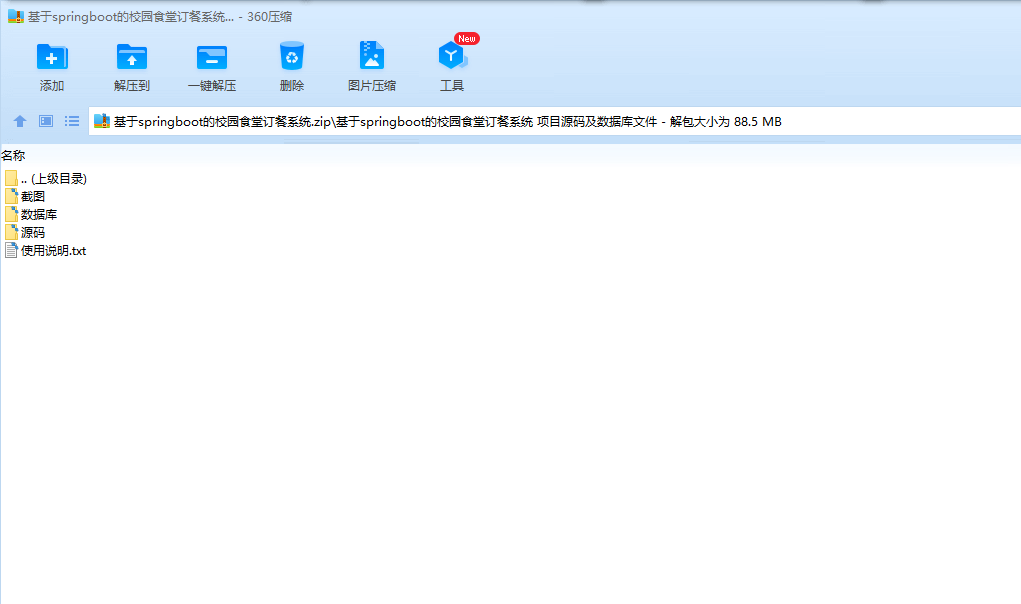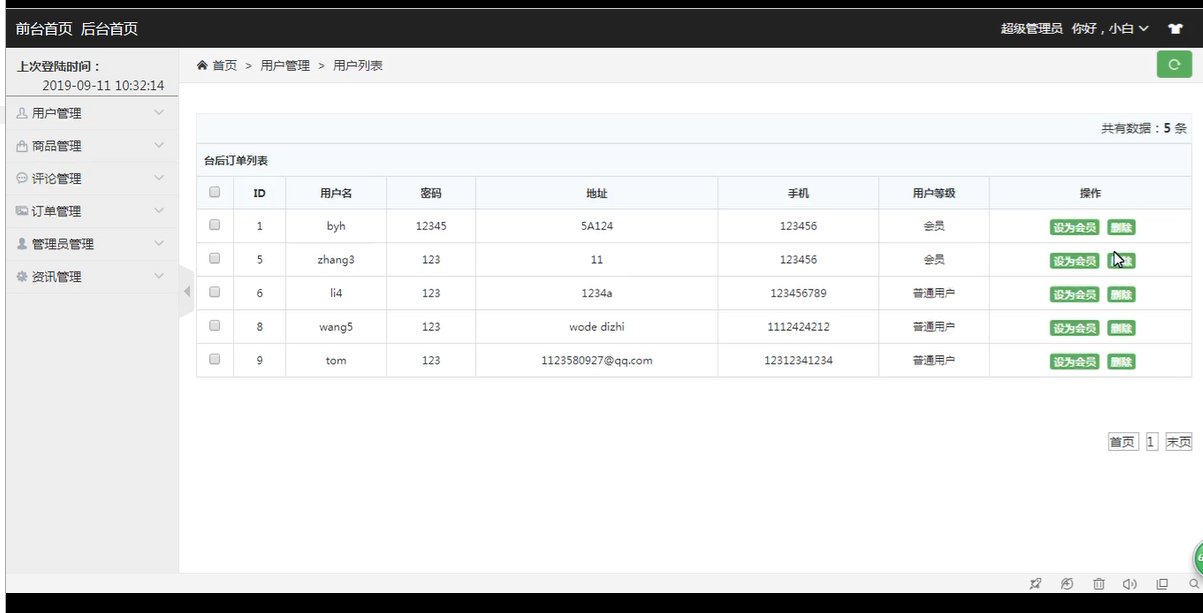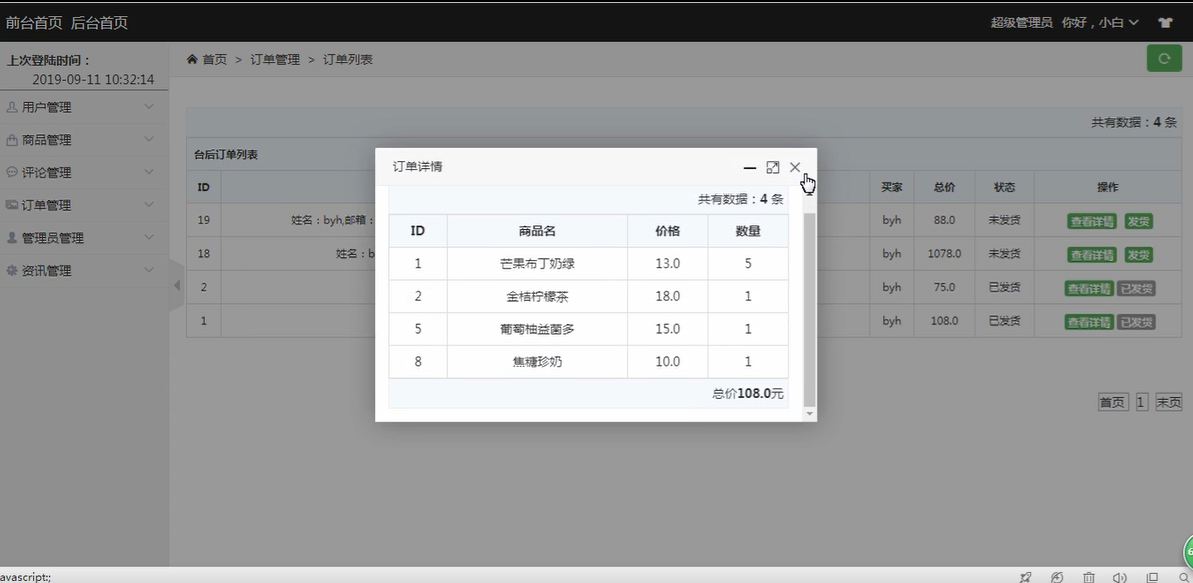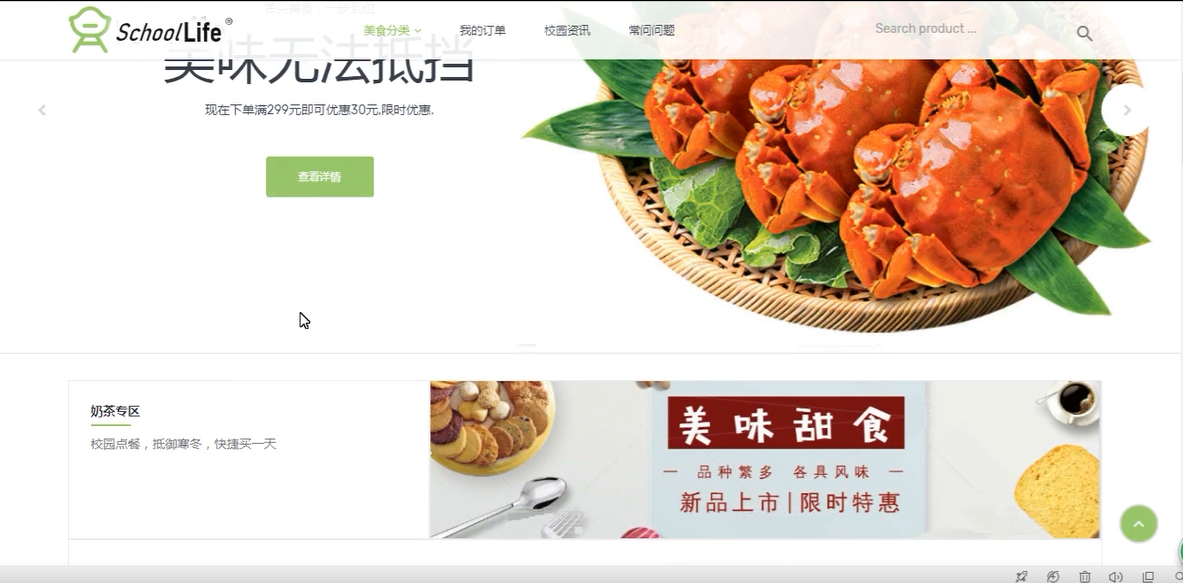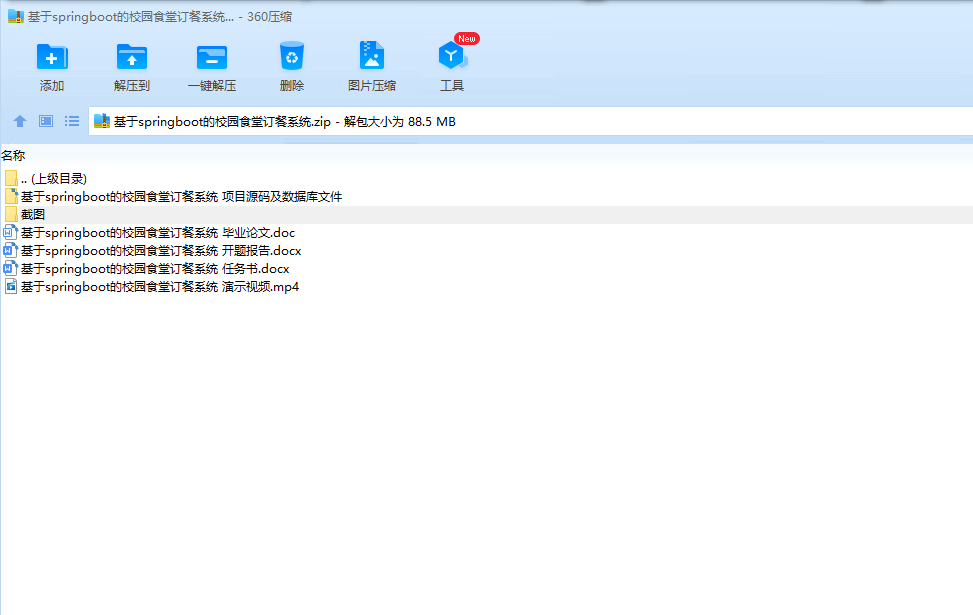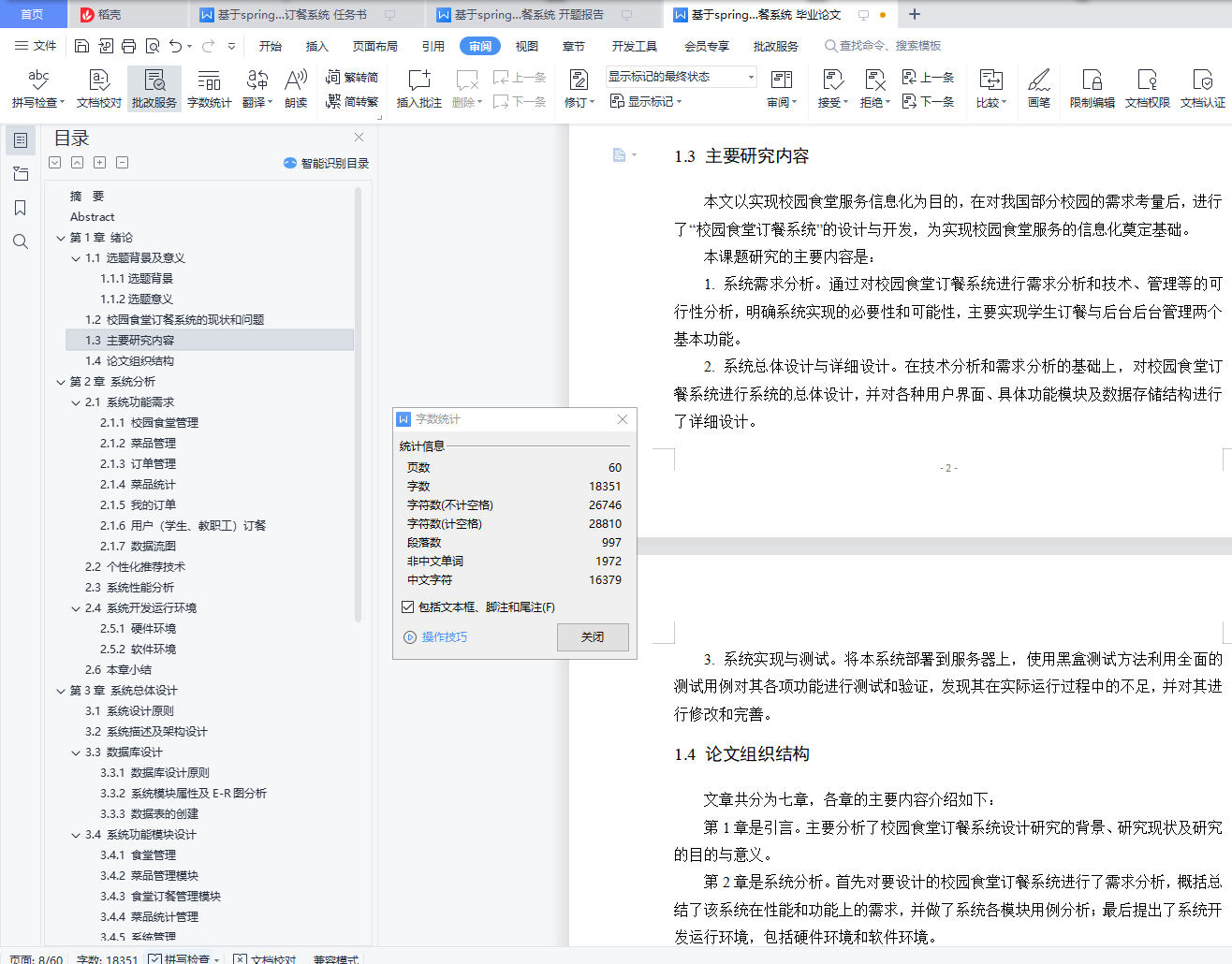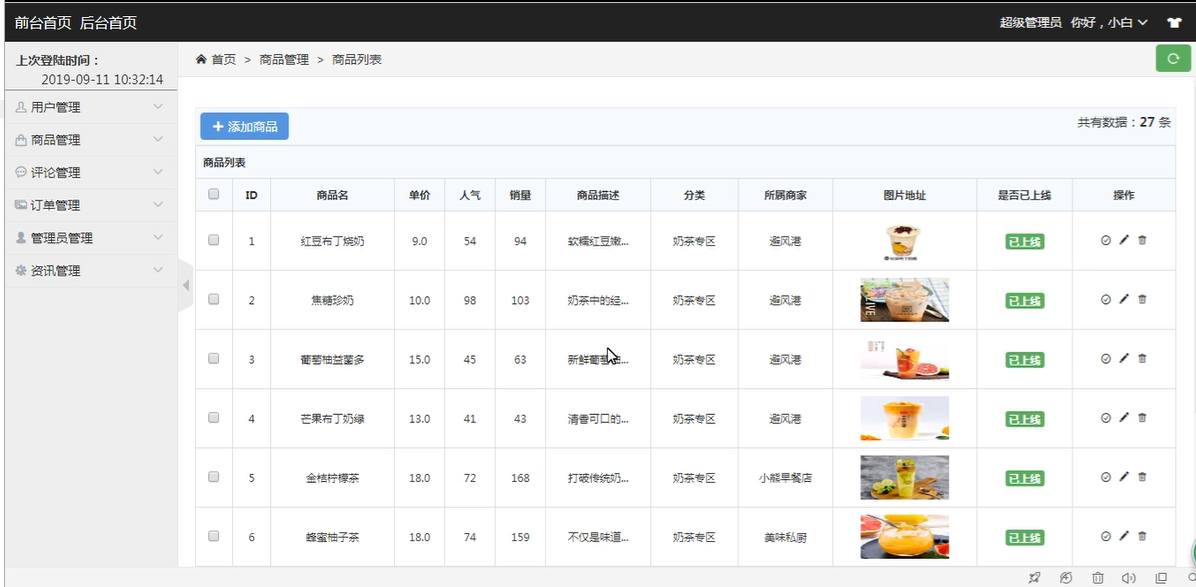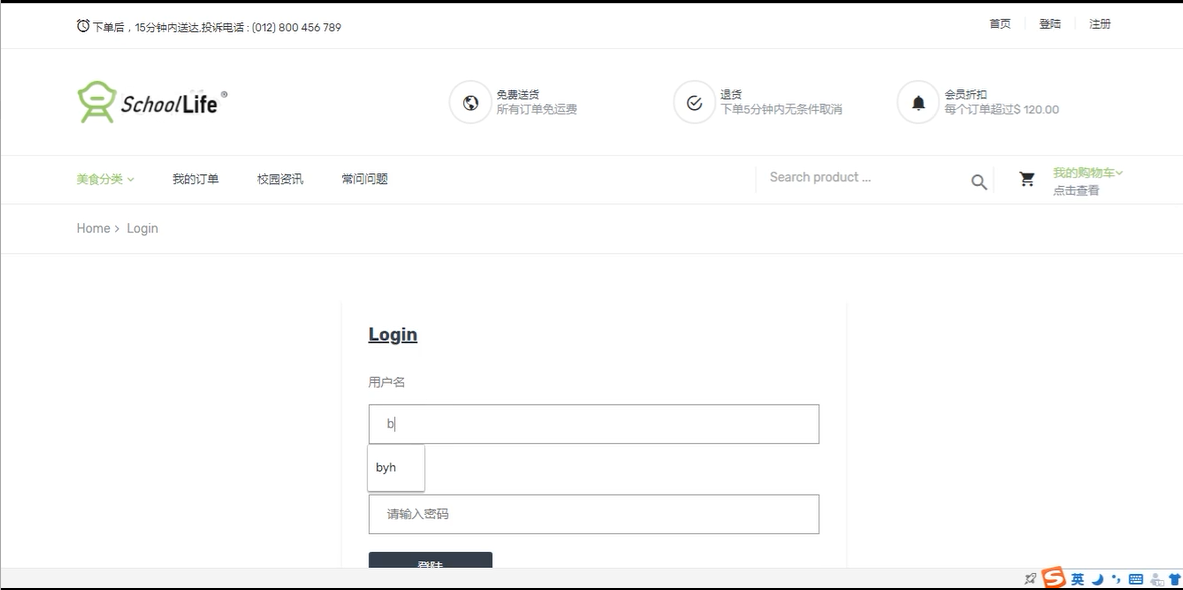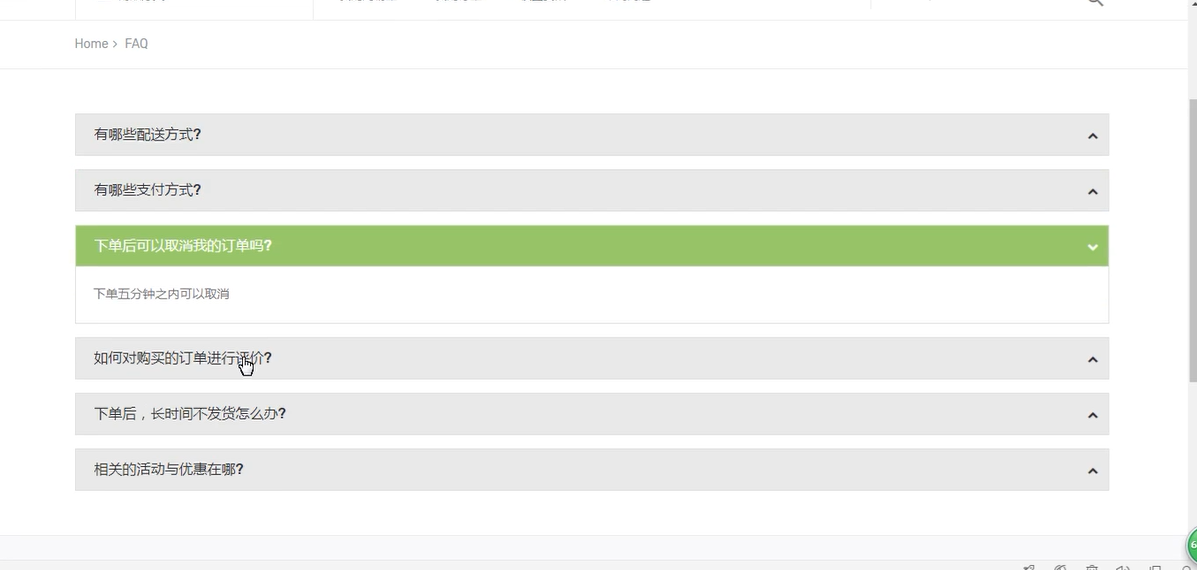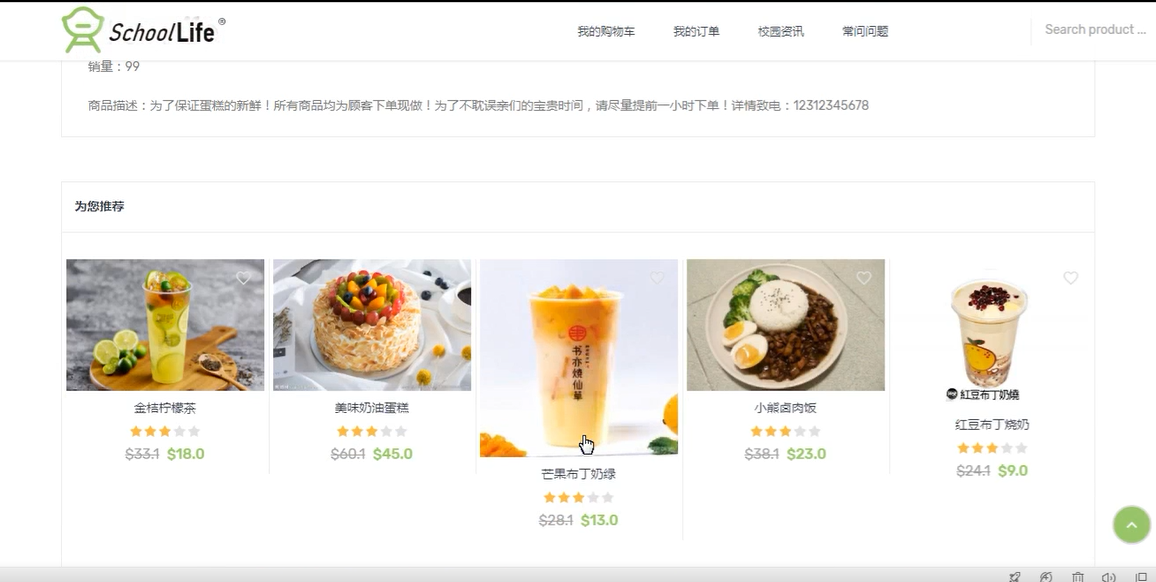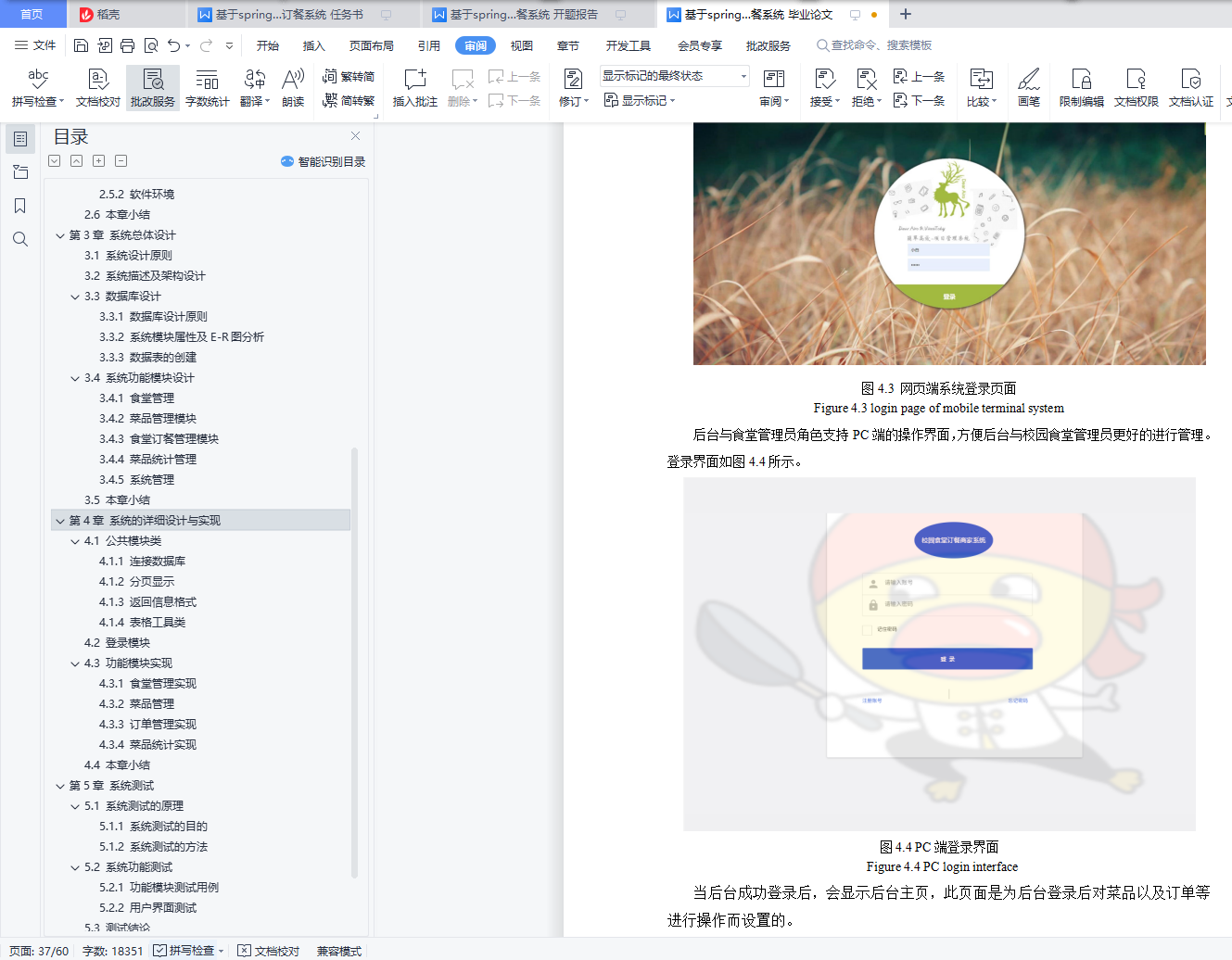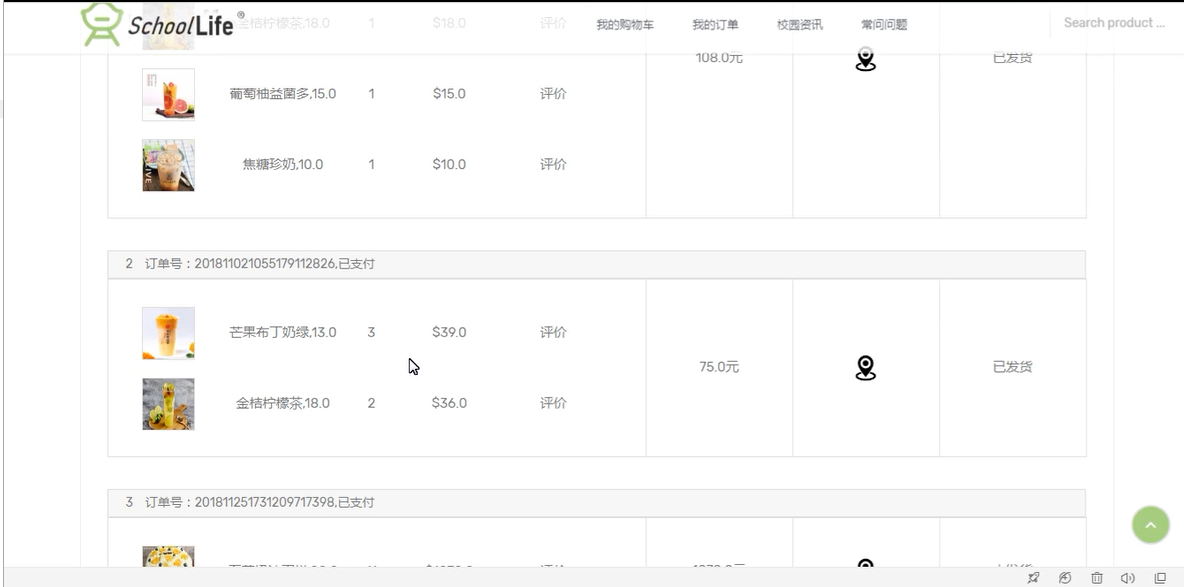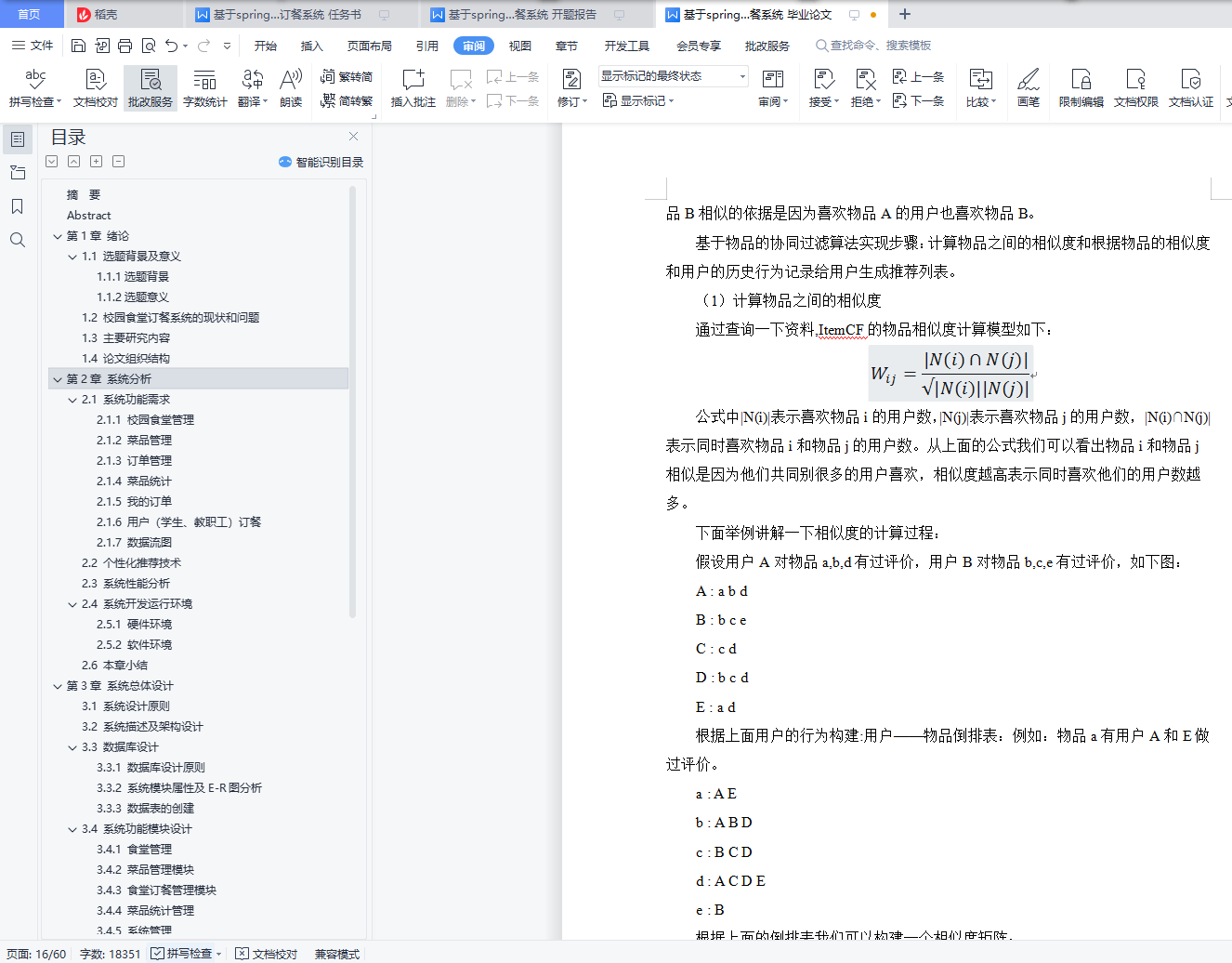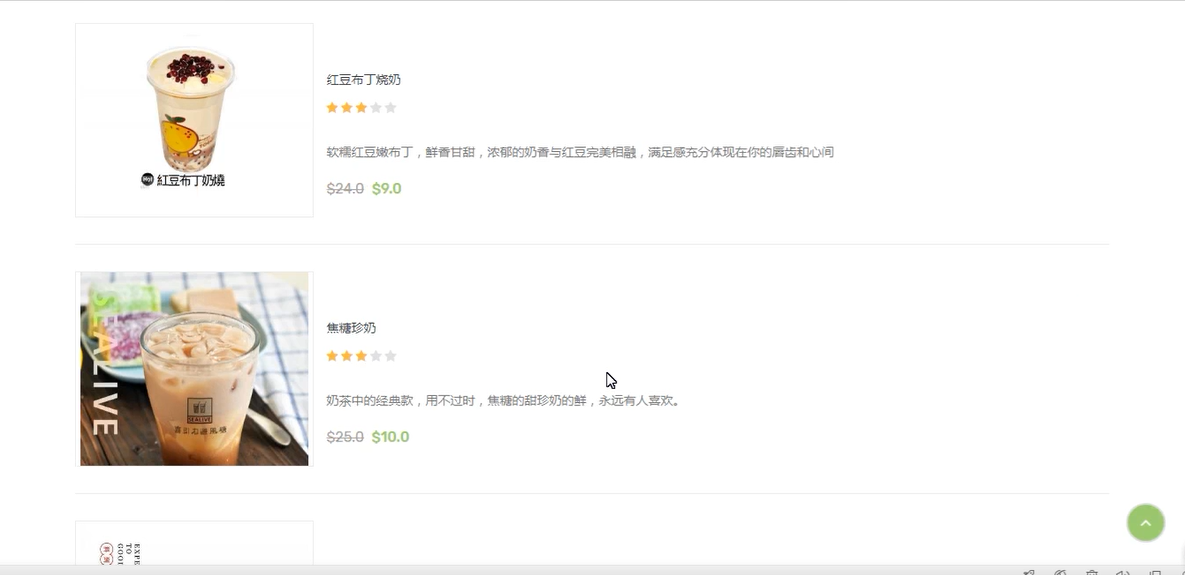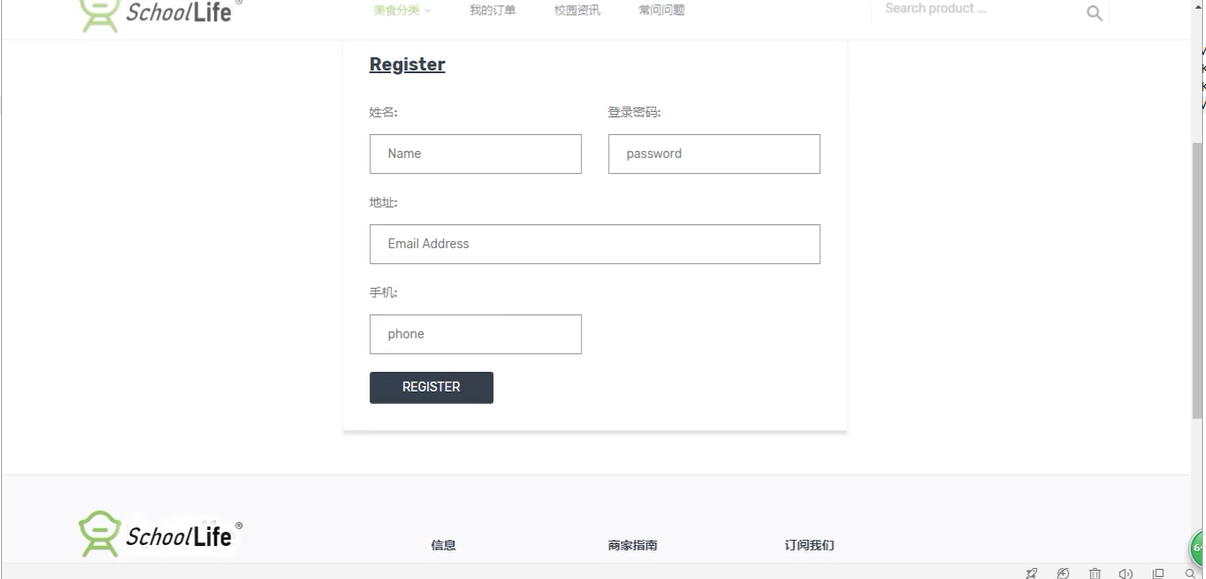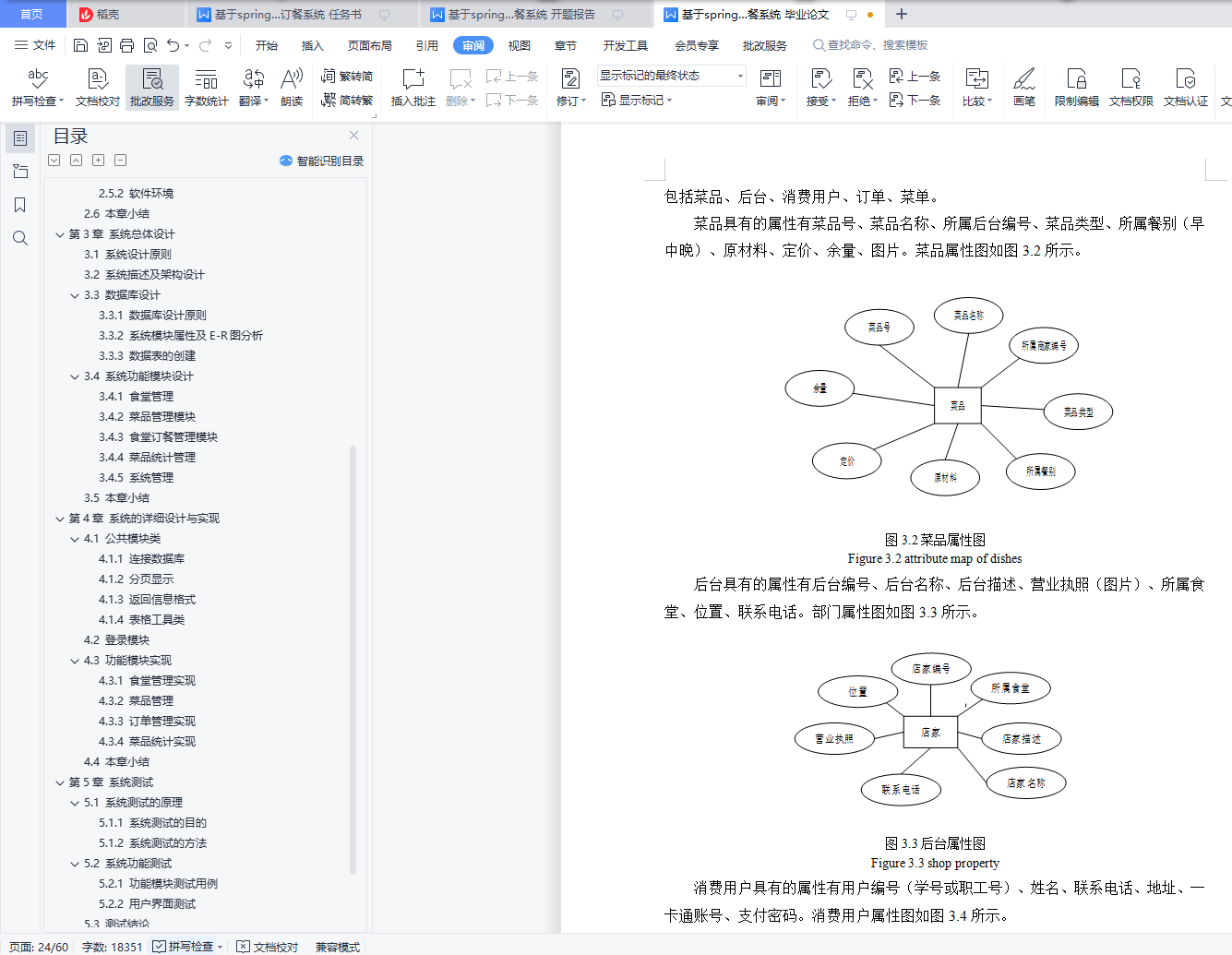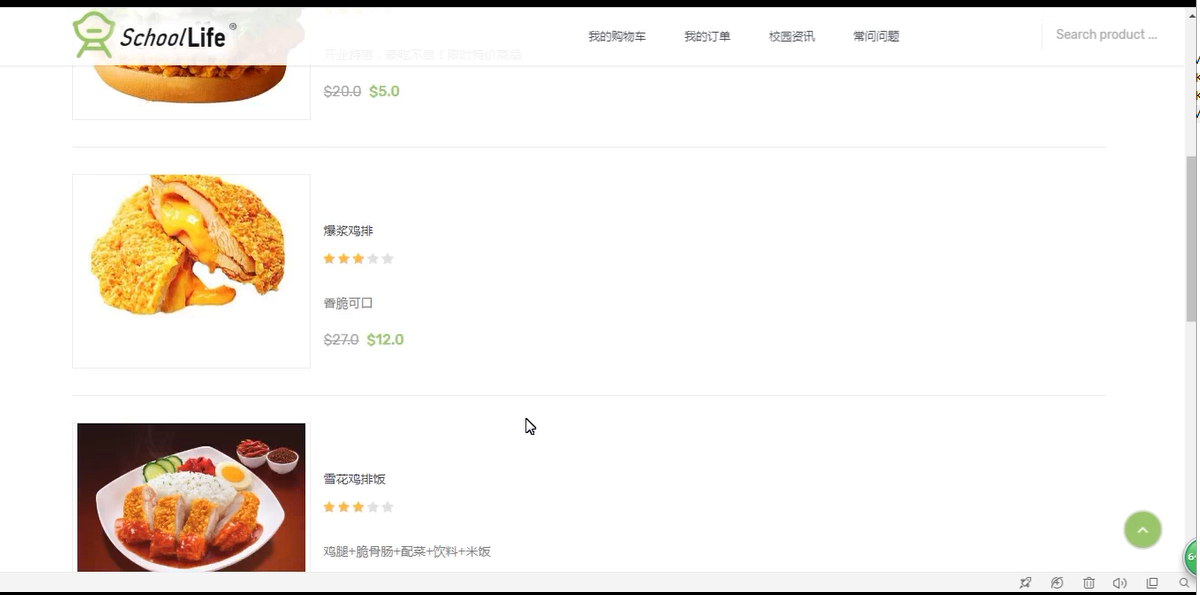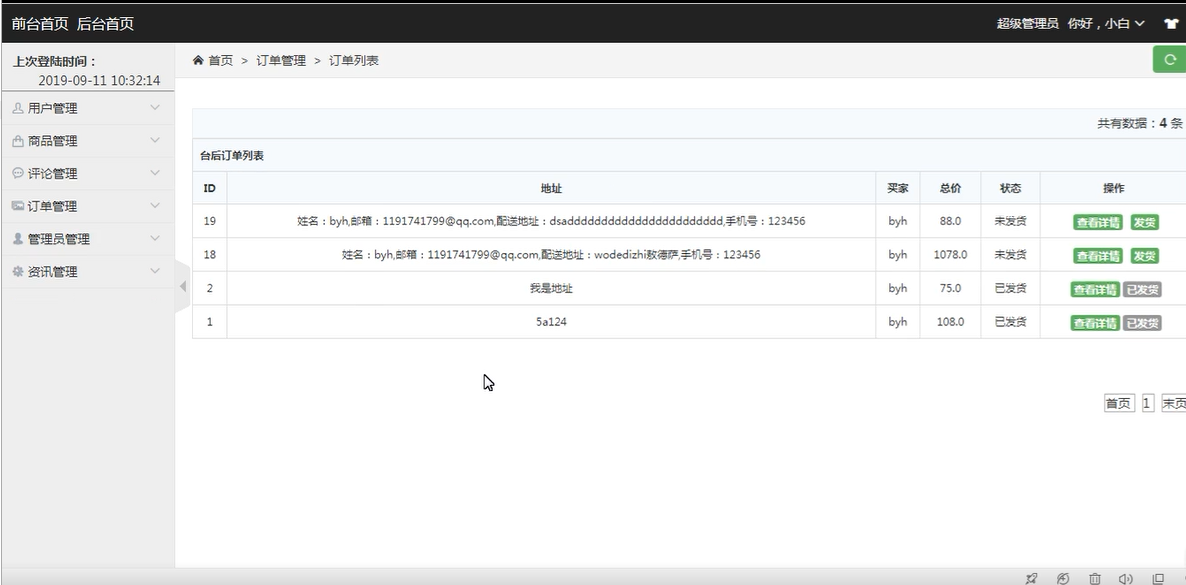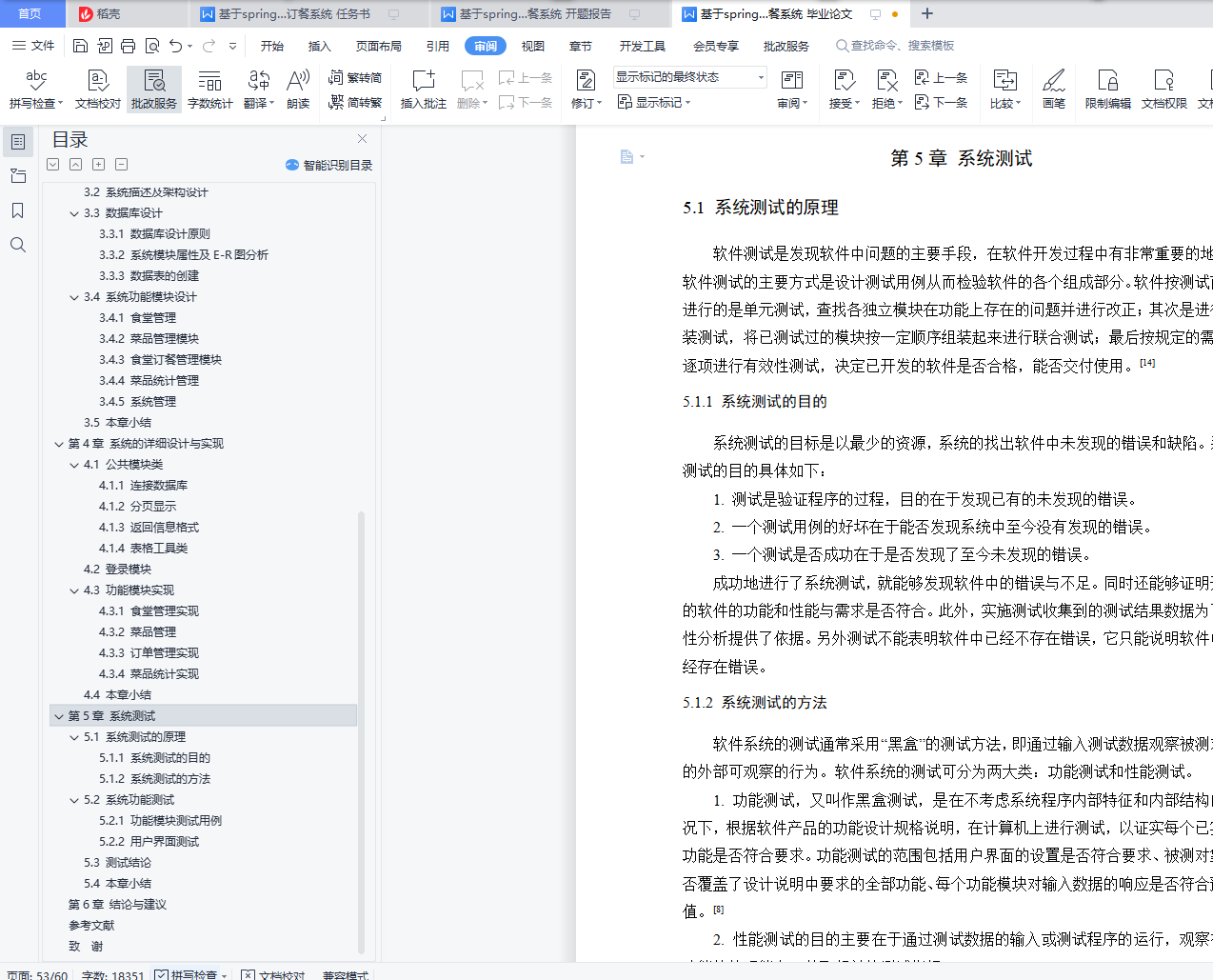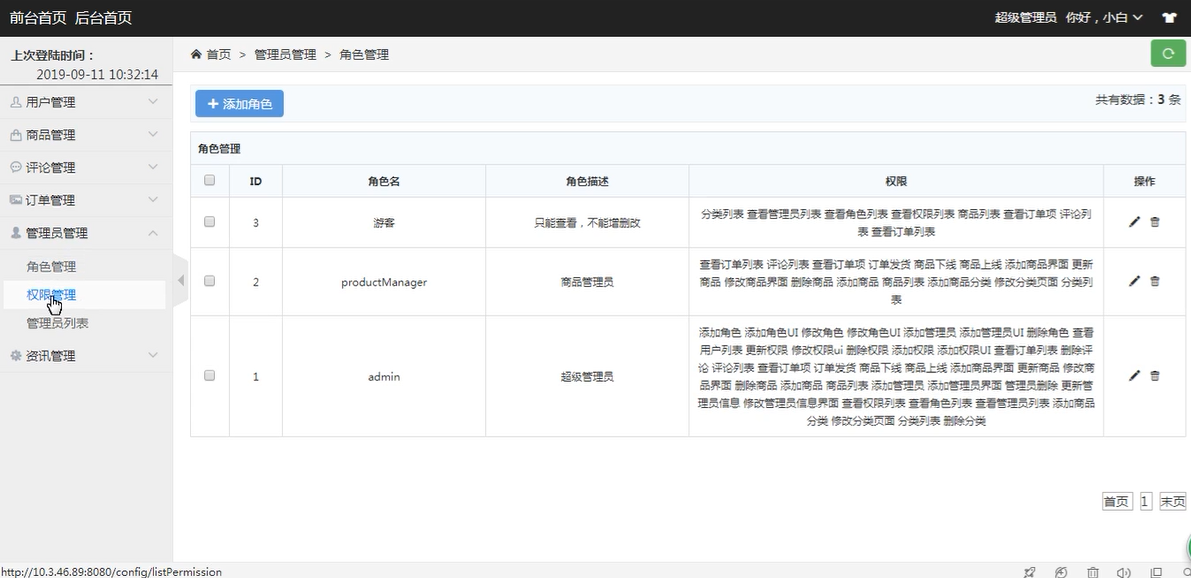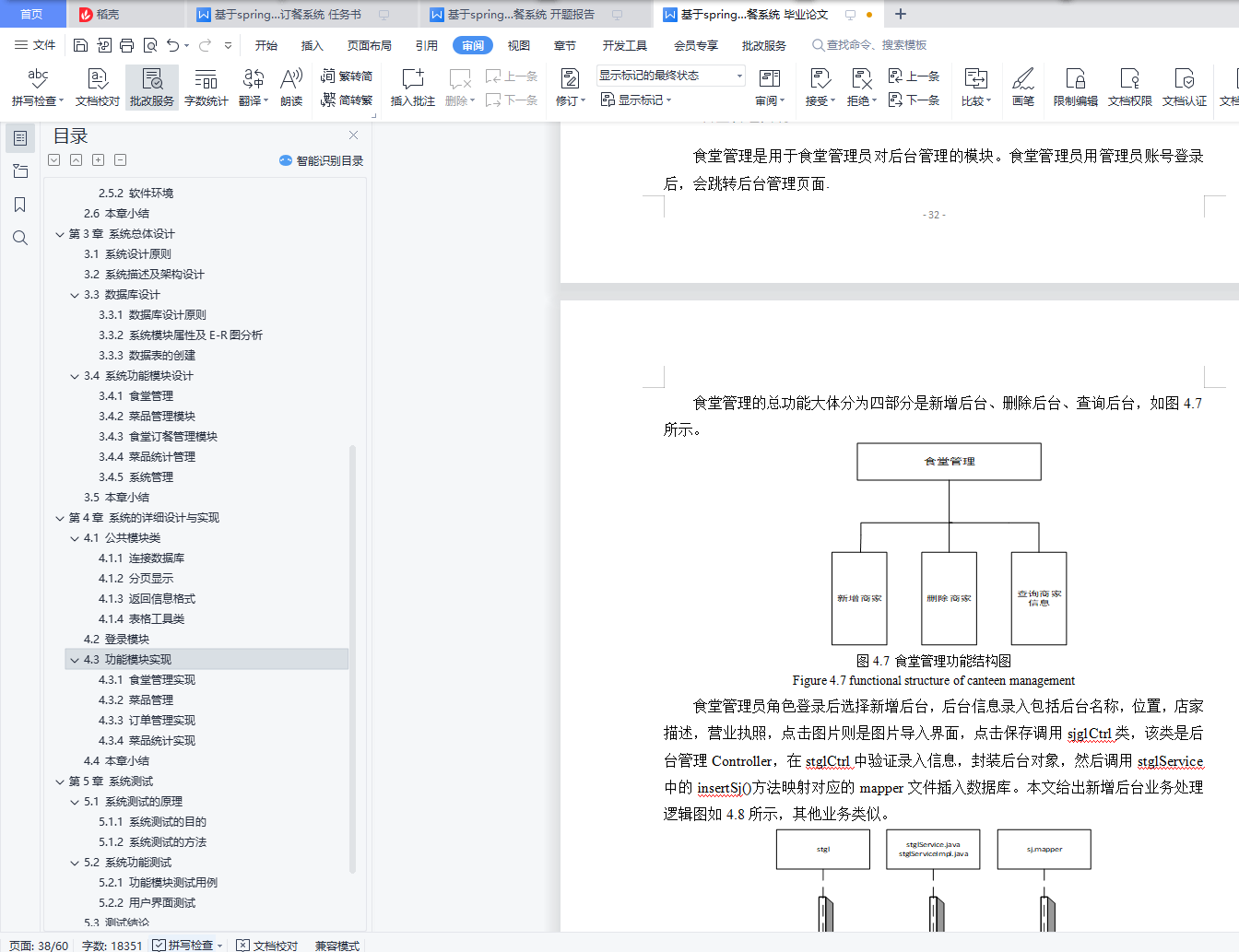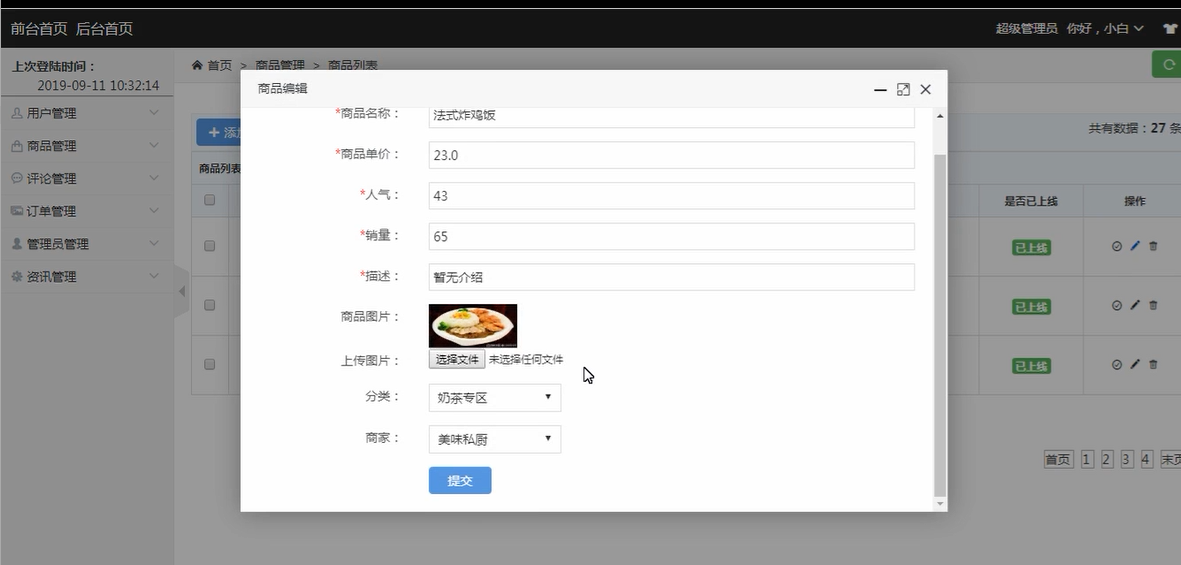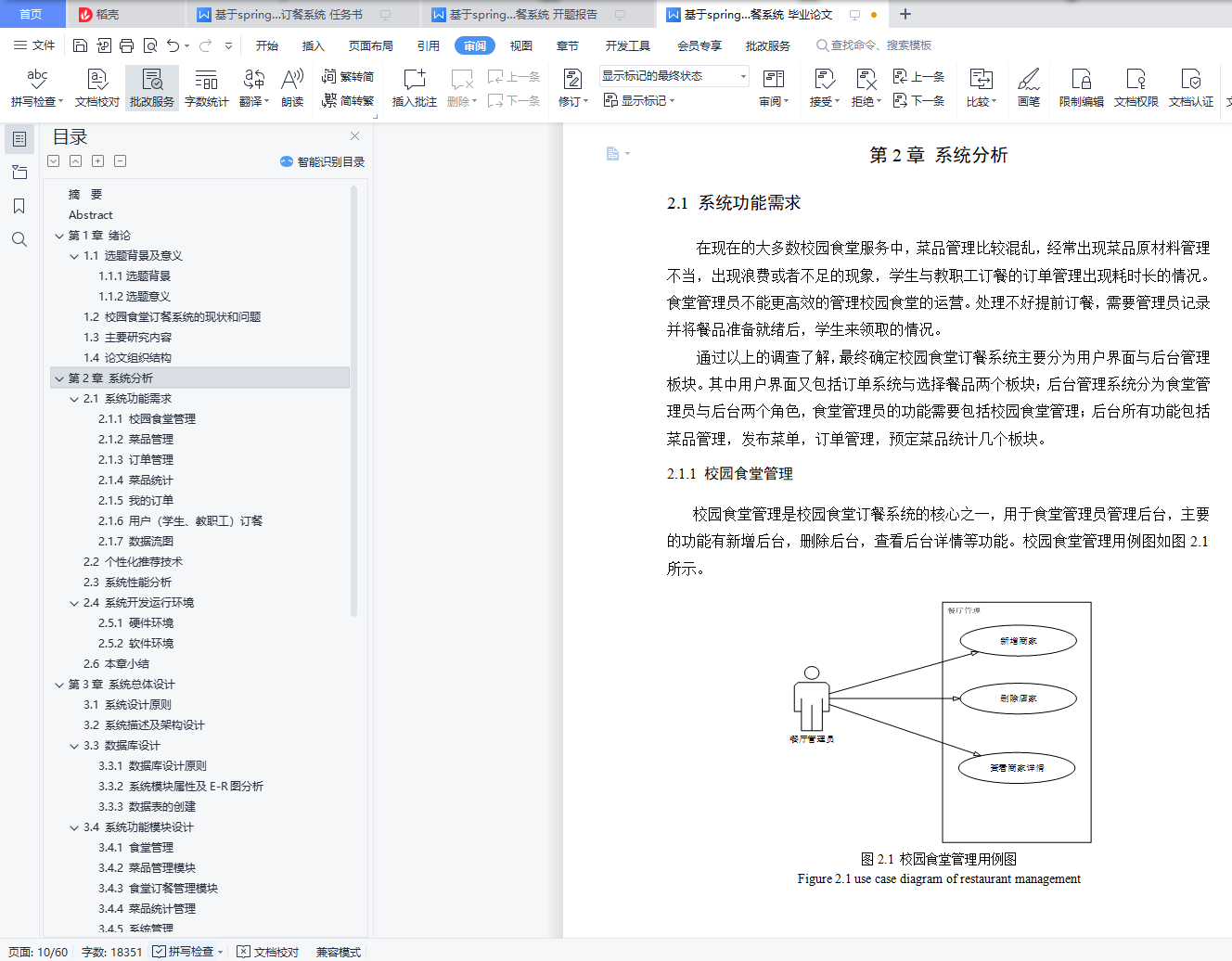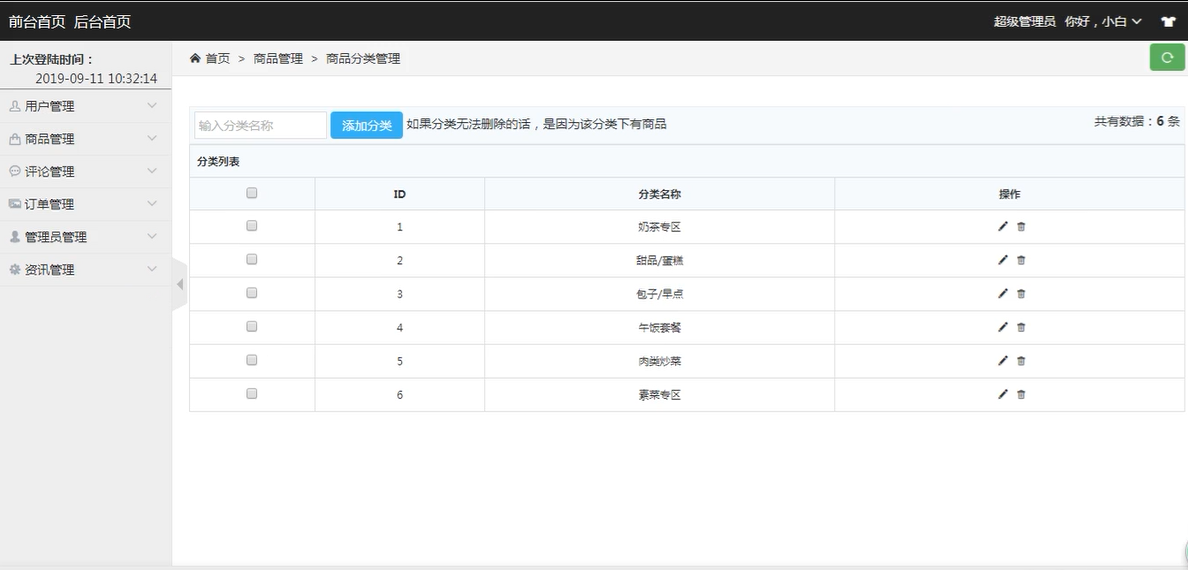摘 要
近年来随着高校的扩招,大学生人数越来越多,食堂里面的菜肴也变得五花八门,但学生每天都面临着不知吃什么的问题,当前学校食堂提供的服务满足不了学生多样化的需求。
校园食堂是为学生提供用餐服务的重要场所,在现阶段中,大多数校园食堂的用餐人数较多,但食堂设施却较为落后,无法满足师生的点餐服务需求。在信息化时代中,互联网+校园食堂点餐系统的设计,能有效改善上述问题,让校园食堂服务得到优化,提高食堂管理的质量效率。
本文根据对校园食堂现状的调研,通过使用Spring Boot,VUE等技术设计校园食堂点餐系统,实现菜肴推荐,菜肴收藏等功能,为学生日常选餐提供参考;还实现食堂管理,用户管理等服务,加强学校对食堂的日常管理。
关键词:校园订餐;食堂订餐;订餐系统;Spring Boot;MySQL
Abstract
In recent years, with the expansion of colleges and universities, the number of college students is increasing, and the dishes in the canteen have become varied. However, students face the problem of not knowing what to eat every day. The current services provided by the current school canteen cannot meet the diverse needs of students.
Campus canteen is an important place to provide dining services for students. At the present stage, most campus canteens have large numbers of diners, but the canteen facilities are relatively backward, which cannot meet the ordering service needs of teachers and students.In the information age, the design of the Internet + campus canteen ordering system can effectively improve the above problems, make the campus canteen service be optimized, and improve the quality and efficiency of the canteen management.
According to the investigation of the current situation of the campus canteen, through the use of Spring Boot, VUE and other technologies to design the campus canteen ordering system, realize dish recommendation, dish collection and other functions, to provide reference for students' daily meal selection; also realize canteen management, user management and other services, strengthen the daily management of the canteen.
Key words: campus meal ordering; canteen meal ordering; meal ordering system; Spring Boot; MySQL
目 录
摘 要 I
Abstract II
第1章 绪论 - 1 -
1.1 选题背景及意义 - 1 -
1.1.1选题背景 - 1 -
1.1.2选题意义 - 1 -
1.2 校园食堂订餐系统的现状和问题 - 2 -
1.3 主要研究内容 - 2 -
1.4 论文组织结构 - 3 -
第2章 系统分析 - 4 -
2.1 系统功能需求 - 4 -
2.1.1 校园食堂管理 - 4 -
2.1.2 菜品管理 - 5 -
2.1.3 订单管理 - 5 -
2.1.4 菜品统计 - 6 -
2.1.5 我的订单 - 6 -
2.1.6 用户(学生、教职工)订餐 - 7 -
2.1.7 数据流图 - 8 -
2.2 个性化推荐技术 - 9 -
2.3 系统性能分析 - 12 -
2.4 系统开发运行环境 - 12 -
2.5.1 硬件环境 - 12 -
2.5.2 软件环境 - 13 -
2.6 本章小结 - 13 -
第3章 系统总体设计 - 15 -
3.1 系统设计原则 - 15 -
3.2 系统描述及架构设计 - 15 -
3.3 数据库设计 - 17 -
3.3.1 数据库设计原则 - 17 -
3.3.2 系统模块属性及E-R图分析 - 17 -
3.3.3 数据表的创建 - 20 -
3.4 系统功能模块设计 - 24 -
3.4.1 食堂管理 - 25 -
3.4.2 菜品管理模块 - 25 -
3.4.3 食堂订餐管理模块 - 25 -
3.4.4 菜品统计管理 - 26 -
3.4.5 系统管理 - 26 -
3.5 本章小结 - 26 -
第4章 系统的详细设计与实现 - 27 -
4.1 公共模块类 - 27 -
4.1.1 连接数据库 - 27 -
4.1.2 分页显示 - 28 -
4.1.3 返回信息格式 - 28 -
4.1.4 表格工具类 - 28 -
4.2 登录模块 - 29 -
4.3 功能模块实现 - 32 -
4.3.1 食堂管理实现 - 32 -
4.3.2 菜品管理 - 34 -
4.3.3 订单管理实现 - 40 -
4.3.4 菜品统计实现 - 43 -
4.4 本章小结 - 45 -
第5章 系统测试 - 47 -
5.1 系统测试的原理 - 47 -
5.1.1 系统测试的目的 - 47 -
5.1.2 系统测试的方法 - 47 -
5.2 系统功能测试 - 48 -
5.2.1 功能模块测试用例 - 48 -
5.2.2 用户界面测试 - 50 -
5.3 测试结论 - 50 -
5.4 本章小结 - 51 -
第6章 结论与建议 - 52 -
参考文献 - 53 -
致 谢 - 54 -
